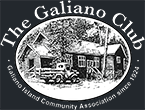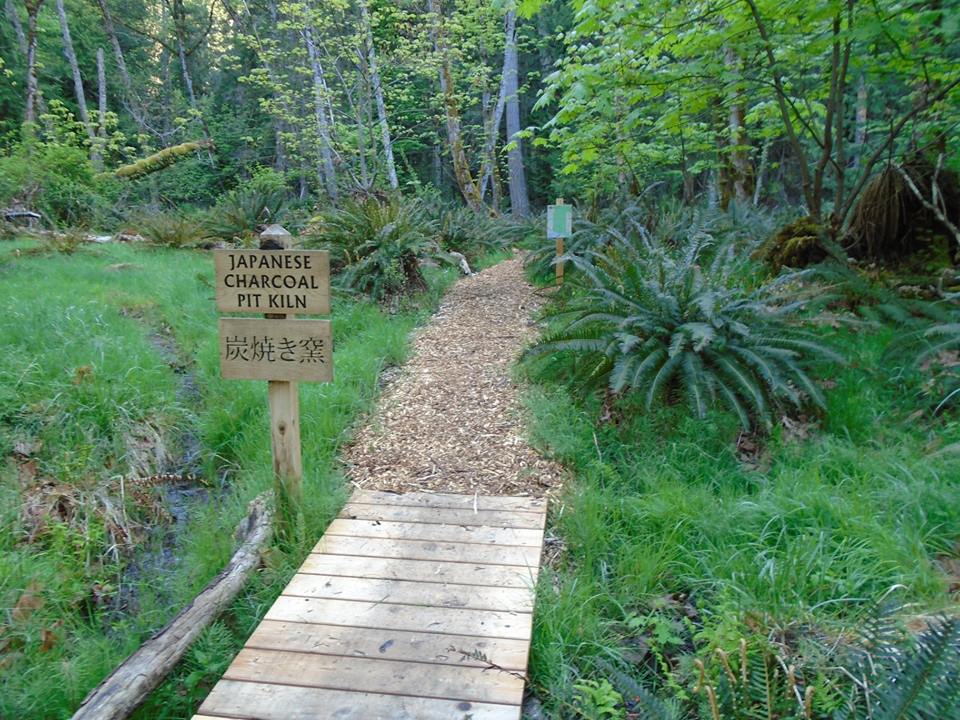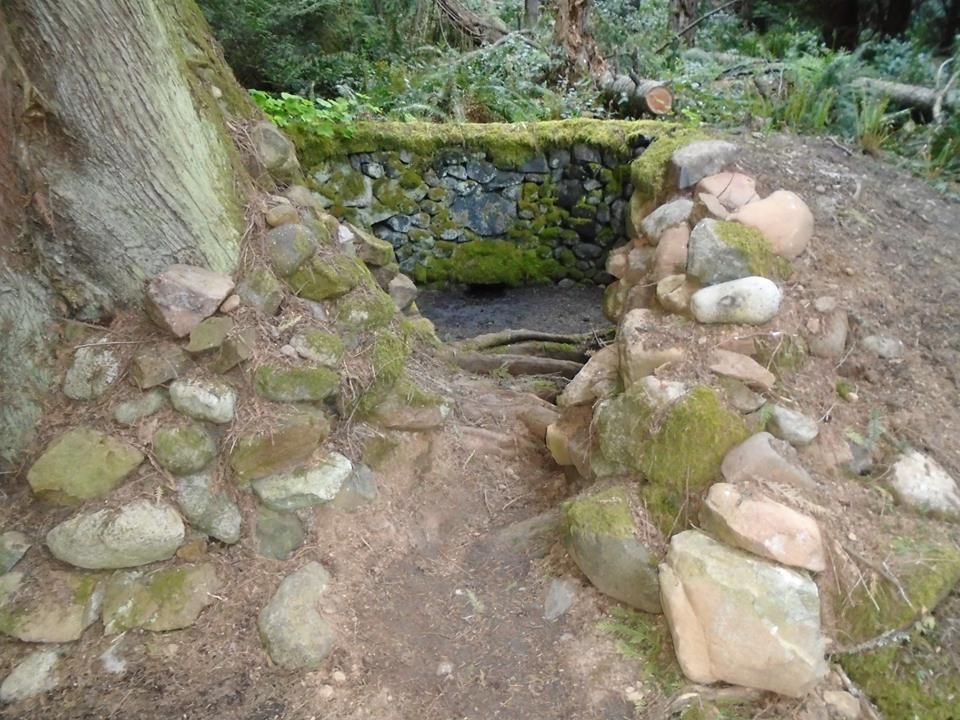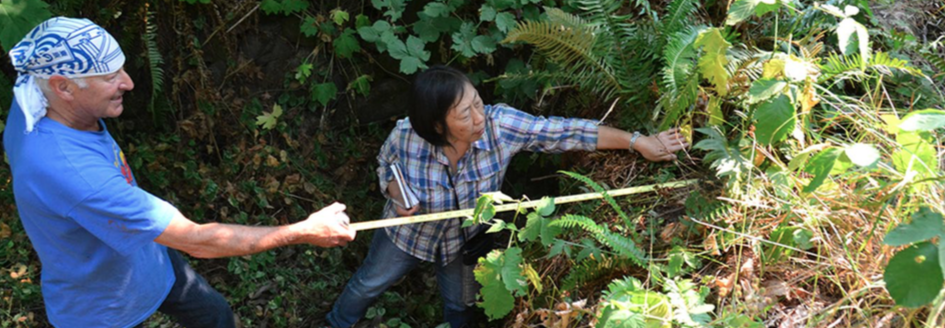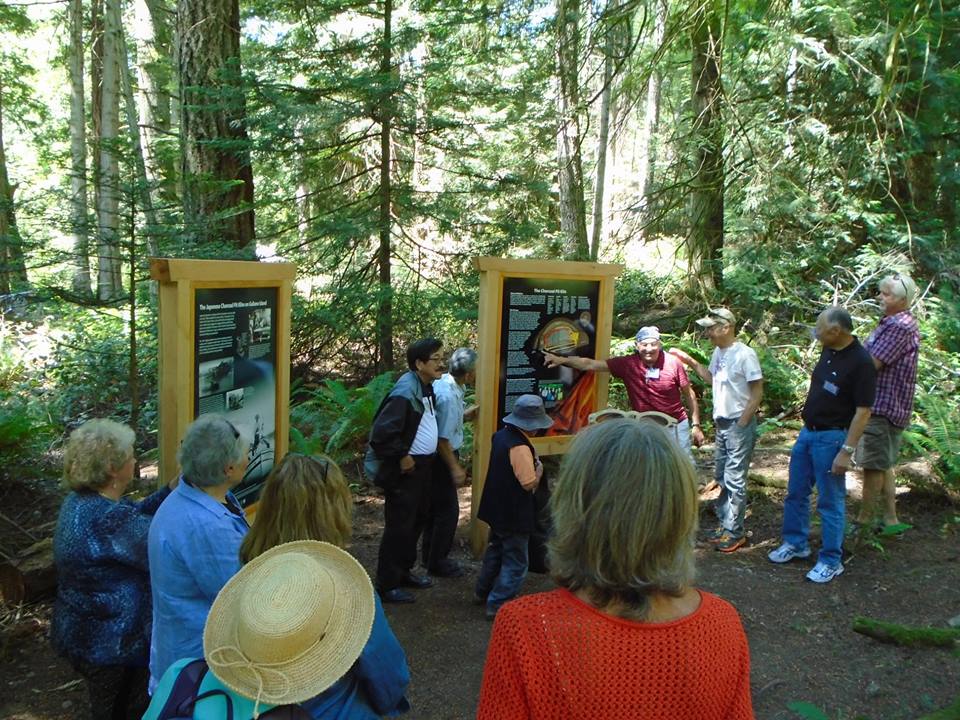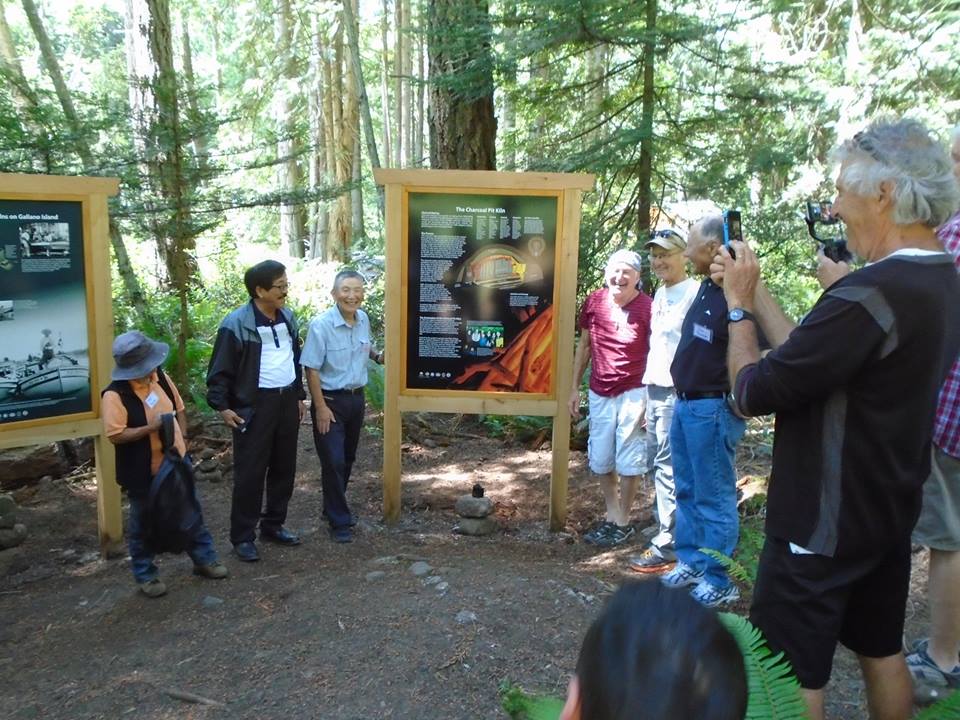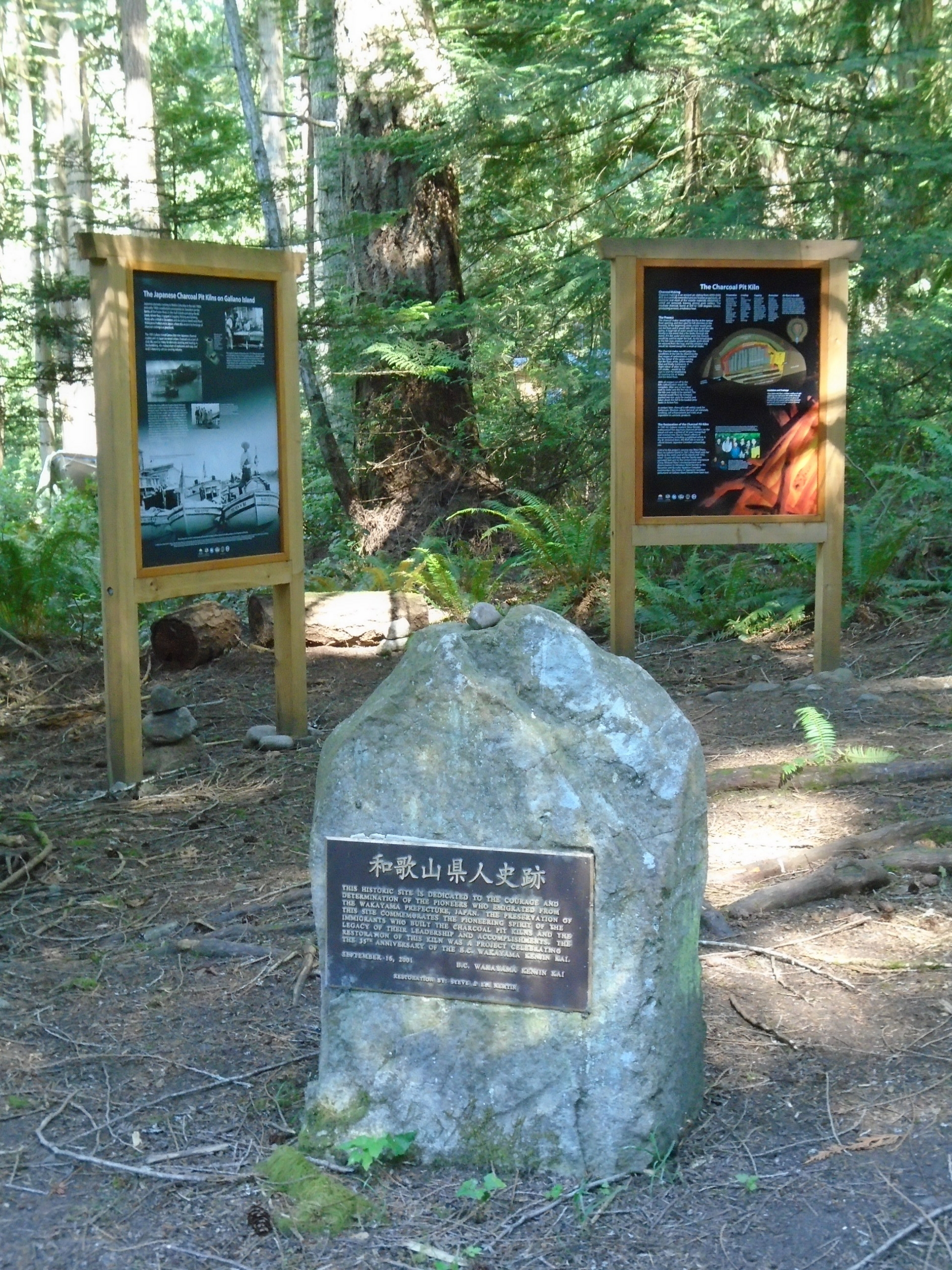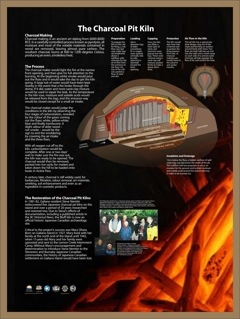Japanese Charcoal Pit Kiln
There are 5 known charcoal pit kilns on Galiano Is.. These mostly teardrop-shaped, stone-lined kilns are silent evidence of a thriving early 20th C charcoal making industry by Japanese settlers mostly from that country’s Wakayama Prefecture.
One such pit kiln has been excavated & restored by islander, Steve Nemtin, & is located in Bluffs Park. The site is a downhill walk from the lookout area, a shorter walk from the end of Highland Rd.
The 1st Japanese settlers in BC arrived in the 1870s. Over the next few decades more arrived, most settling on Vancouver Island, the Southern Gulf Islands (SGI) and the area around the Fraser River delta. By 1941, the SGI area held almost 200 persons of Japanese descent out of a total population of over 3,000.
Despite the fact that they made up a significant percent of the SGI population, little physical evidence remains of these early Canadian settlers to the Gulf Islands. With the exception of some graves, a few houses and foundations that still exist, the ruins of these charcoal pits kilns are the most prominent reminders we have that Japanese Canadians were an important part of the early settler history of southern BC. Charcoal making was an industry developed by this group of immigrants who brought a technology from their home country at a time when racial discrimination kept them out of many other occupations. Making charcoal was a business that a person could do in the off-season when not busy with logging. fishing or farming. It was very hard work, but it produced a commodity that could be sold for good money, and was also useable at home for cooking & heating. It was made from wood, but employed species that were less desirable for other purposes and it was a good way to make use of the scrap left over from logs sawn for lumber.
In the decades after WW2 following the uprooting of Japanese Canadians, the kilns built by the pioneers fell into disuse.
In 1982, while walking in the forest near to his home, Bluffs Park, Steve Nemtin fell into a over-grown-with-greenery stone-lined hole. Realizing that the hole was man-made, his curiosity piqued, Steve started researching what it might have been and eventually learned that it was the remains of a kiln for making charcoal. Part-time, over the next 20-some years, Steve & son, excavated the site, exposed the pit kiln in all of its beauty. The Galiano Club got involved & several islanders of Japanese descent; a connecting trail was built, directional signs put in place.
A monument to these early Japanese Canadians, donated by the BC Wakayama Kenjin Kai, was dedicated in Sept. 2001 as part of a ceremony presided over by BC’s Lieutenant Governor, Iona Campagnolo.
In 2017, with funding from ‘Canada 150’ (a federal/provincial program designed to promote the commemoration of our country’s 1867 Confederation), a pair of Interpretive Panels were installed nearby that fully explain the history of charcoal pit kilns in the SGI.
(with thanks to, ‘Island Forest Embers’, a publication of the Japanese Garden Society of Salt Spring Island, 2018)
